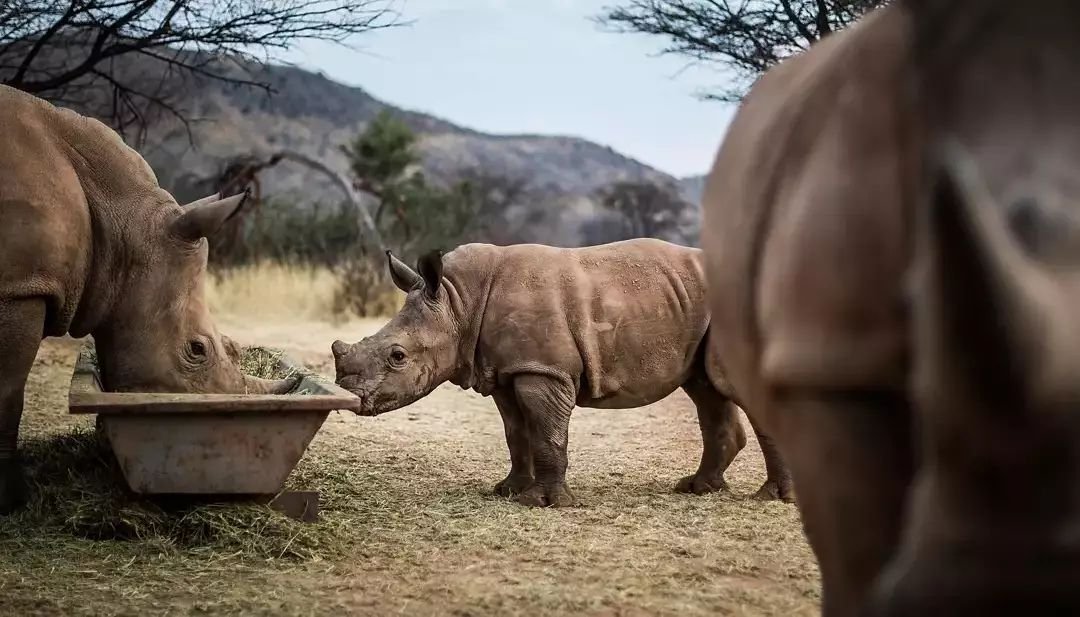
Rhinos are heading towards extinction.
There are around 5000 black rhinos, and maybe 14 000 white rhinos left in the world.
What is rhino horn?
Rhino horn is worth more than gold on the black market. Made from the same material as fingernails, it is hailed for its apparent medicinal value. More likely, it’s allure lies in its scarcity and illegality, serving its owners as a symbol of status and power. Rhino horn, however, can be safely removed without killing the animal or causing it damage. It will grow back - making it a sustainable resource.
What is happening on the front?
Rhinos are worth more dead than alive. Private rhino owners and National parks have deployed anti-poaching units to defend this precious species, making use of helicopters, dogs, armed guards, drones and ingenious technology - to no avail. Poachers are willing to risk their lives for the rewards promised to them by organized poaching syndicates. Sadly, corruption is rife among guards, politicians, even veterinarians have not been able to resist temptation.
Rhino Orphans
Rhinos are often brutally mutilated, deprived of their horns, and left to suffer in great pain. More than often, rhino mothers are killed, leaving an orphaned calf behind. If the calves survive, they are often traumatized and require 24/7 care in order to survive into adulthood. Fortunately many orphaned rhinos have successfully been released back into the wild.
What is the solution?
We strongly believe that the solution is to legalize the trade in rhino horn. By releasing massive stockpiles of rhino horn which have uselessly accumulated at reserves and in the safes of rhino owners, the market may be flooded, curbing the demand and making a rare and sought-after commodity accessible, and obtainable. This would decrease the value of rhino horn on the black market. More even, it would give rhino protectors, custodians and owners an incentive to keep, raise and protect rhinos, and provide the necessary funding to parks and rhino owners to protect and breed them, in their natural habitat.
Convention on International Trade in Endangered Species (CITES)
Because rhinos are endangered, it is illegal to trade with rhino horn, as determined by CITES. Ironically, it is fully legal to export live rhinos to any country in the world, with legally issued CITES permits. CITES meets every two years to amend end review its rules. African countries have fought for the legalization in trade, but to no avail, as non-African countries are not convinced that this will benefit the species. African voices, the voices of the people fighting this war, are not being heard, and decisions are made by those who do not understand the consequences.
What can I do?
Spread the uncomfortable truth. We need to legalize the trade before it is too late. In the meantime, you can volunteer at the rhino momma project, become a volunteer at Mount Etjo anti-poaching program, donate money to HoRN to fund rewards to whistle-blowers. Share, educate and hopefully reach the decision makers at the next CITES convention.
“We need to plea for Conservation NGO funding, and scientific projects funded by other institutions to keep rhino breeding projects alive. One of the biggest expense and frustration is having to wage a war against poachers, which generally across Africa we are loosing. Yet these illegal activities of poaching (risking lives of poachers and protectors of rhino) and smuggling horn (probably with huge local and international corruption) are funded and flourishing by illegal rhino horn trade. We dehorn rhino to protect them, spend money to keep these (to us worthless) horns safe, and stockpile the very product that makes poachers and smugglers rich at huge expense. We plea donars and philantropists to save the rhino, yet the rhino could pay for themselves, their protection, breeding projects and rhino could easily fund research and community projects. They could add huge amounts to the budget of National Parks and Game Reserves, instead of depleting these budgets allocated, and relying on conservation project donations to stay operational.” - Dr HO Reuter, experienced Namibian wildlife veterinarian.

